How Long Should Kittens Eat Kitten Food?
Young kittens can’t eat solid food, so they are often placed on a kitten food diet. This is to ensure that the little felines receive ample nutrition even if they are no longer being nursed by their mother. But how long should kittens eat kitten food? The general rule is that kittens younger than one-year-old must have a kitten diet. However, large breeds like Maine Coon and Ragdolls may need to consume kitten food up to 18 months of life.
How Long Should Kittens Eat Kitten Food?
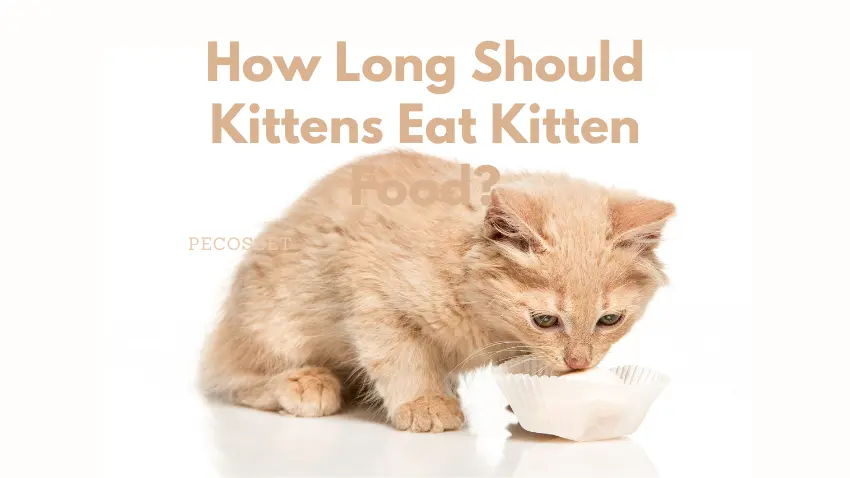
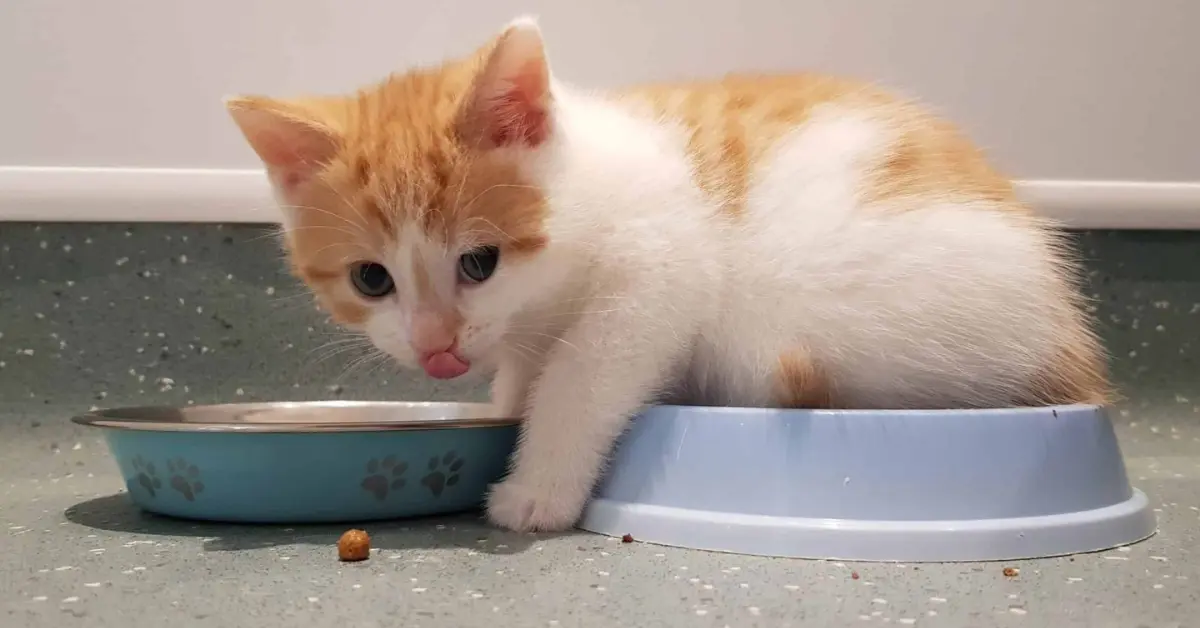
Unlike adult cats, kittens need to consume large amounts of protein. This is to support their growing bodies. Kitten food also contains higher doses of vitamins and minerals that the feline needs to grow healthy. With that, giving cat food right away isn’t advisable because it lacks the nourishment a kitten needs to thrive.
Knowing when to switch from kitten food to cat food is crucial so your pet will receive the nutrition it needs. Also, it’s not just about when, but also how you will perform the switch, which I discussed in detail below.
Food transition happens at least twice in a cat’s life. It first occurs when it gets weaned from the mother cat. From the mother’s milk, the kitten will be introduced to a kitten formula, which is liquid food. Usually, kittens can be weaned from the mother at eight weeks, but it’s best to let the mama cat decide. However, if the kitten is abandoned or rejected by its mother, you need to feed it with a powder kitten formula through a bottle. Please read here: How to Wean a Stubborn Kitten from its Mother
After weaning, you should introduce your kitten to kitten food, which is usually wet canned food. As you inch close to its first year, slowly add kibble into the mix. This will help transition your feline from kitten food to cat food slowly.
Remember that switching your kitten to cat food shouldn’t happen overnight. It would be best if you did it gradually to prevent adverse reactions.
How to switch a kitten from kitten food to cat food?
Introducing adult food to a kitten can be tricky, especially if your pet is picky or has strict diet needs. In this case, the help of a veterinarian or a pet nutritionist will help a lot. But in general, the following are the steps in switching a kitten to cat food.
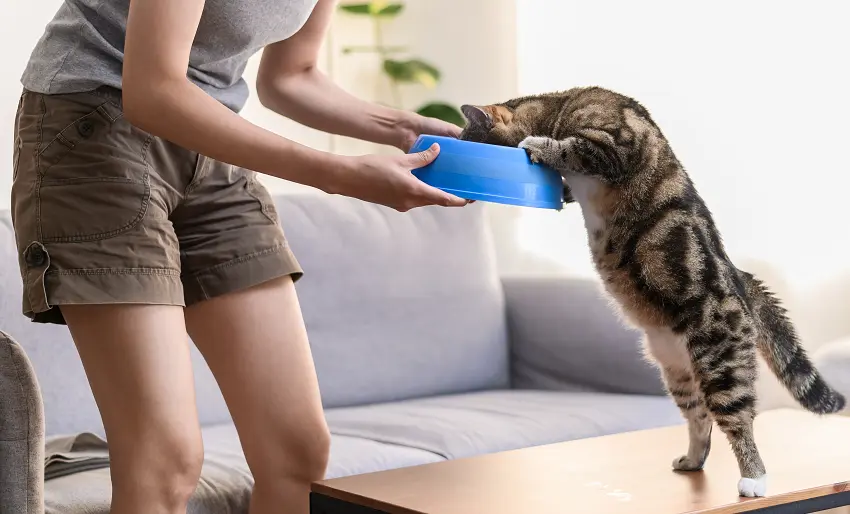
The transition should happen in seven days or more if your kitten has a sensitive tummy.
- For Day 1 and 2, the diet proportion of your kitten food should be ¼ adult food and ¾ kitten food.
- On Day 3 and 4, the proportion is ½ adult cat food and ½ kitten food.
- For Day 5 and 6, your kitten’s meal should be ¾ adult cat food and ¼ kitten food.
- By Day 7, your kitten would be fully transitioned to adult cat food.
However, this is only a rough guide, and you should conduct the transition pace based on your kitten’s specific needs. For cats with sensitive digestive tracts, you can add two more days for each proportion to make it gradual. You can also make smaller increments for a more holistic approach.
No matter how fast you conduct your kitten’s transition to cat food, it would be best if you always observed it for potential side effects. If your kitten develops diarrhea or vomiting, it’s best to see the vet for a consultation. It’s possible that the cat food isn’t suitable for the kitten or that you need to take it slower. This period is also the perfect time to diagnose your kitten’s potential intolerances and allergies.
It would be best if you were patient as finicky kittens will likely reject the new food. You may also need to change the cat food if your kitty isn’t accepting it as necessary. In some rare cases, the vet will recommend instant feeding of the new cat food if your kitten has GI issues that will only worsen on the slow introduction of the food.
How often should kittens eat?
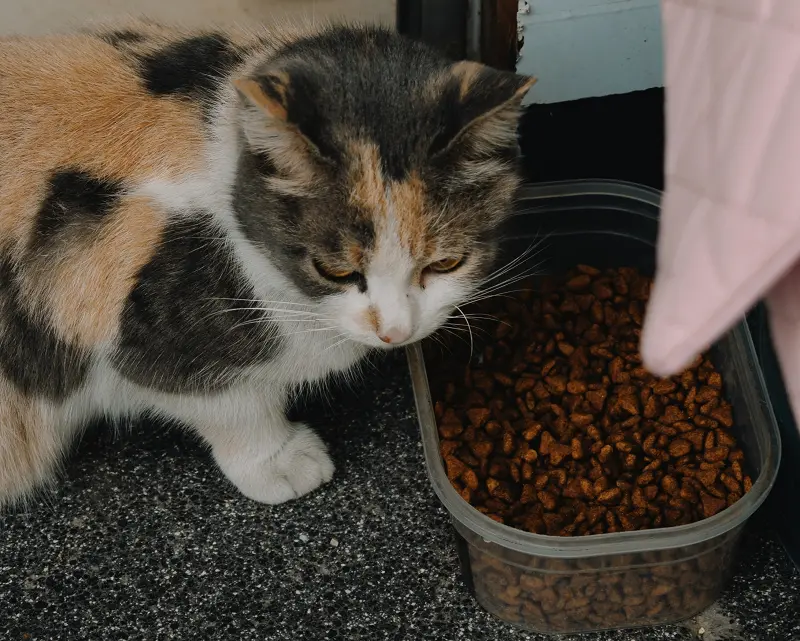
Kittens will need to eat a specific amount of food based on their age. After weaning at eight weeks old, the kitten should be consuming four ounces of wet food divided into four to five servings. Remember that kittens at this age have a tiny stomach, so they can’t eat a lot in one sitting.
Also, since they only consume a small amount at a time, they can easily suffer from hypoglycemia or low blood sugar. This is why you need to spread the servings at least four times a day. You can also leave a small amount of food in the bowl for free-feeding, but you should watch out for potential spoilage.
Once your kitten reaches three months of age, you can feed it three times a day with dry food. The serving should be around 16 to 26 grams, based on your cat’s breed size and activity level. It would be best if you did this until your kitty reaches six months old.
In the 7th month, you can start feeding the kitten twice a day with a serving of 100 to 150 grams each. However, if your kitty is small and tends to get hungry in the middle of the day, you can split the total serving into three meals. It would help if you never let your cat go by without food for a day.
What happens if a kitten eats cat food?
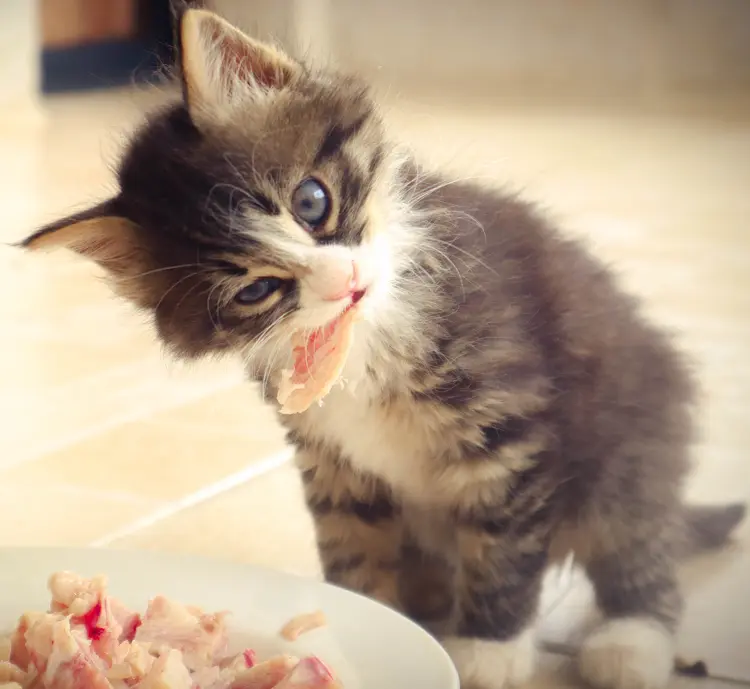
Imagine giving a baby adult human food. It’s not safe, and it doesn’t have the nutrition a growing baby needs. The same goes for kittens. It would help if you fed them with a formula that’s suitable for their age.
While you can find cat food suitable for all ages, I recommend consulting with the vet if it applies to your kitten’s needs. Also, if your kitten tends to snack on your older cat’s bowl, I suggest feeding them in separate rooms. Please read here: How To Introduce A Kitten To An Older Cat
It’s always best to feed your pet based on its age. It will save you from the hassle of emergency vet visits.
What is the best food to give my cat?
Both kittens and adult cats are born to be meat-eaters. But since their domestication, they have become omnivores or creatures that eat both meat and plants.
If you’re transitioning your kitten to cat food, you must look for one that the vet recommends. This will guarantee that the cat food is safe and suitable for your growing kitten. Avoid raw diets for cats because it’s prone to spoilage that can make your kitten sick.
If the food isn’t packed well or it has been open for some days, it can develop fungus. Fungal hyphae and toxins are very dangerous for your cat’s health if ingested.
It would be best if you also looked for an AAFCO seal. AAFCO or the American Association of Feed Control Officials regulate and review pet food products. A cat food product with its seal is guaranteed to provide the necessary nourishment for kittens. It would help if you looked for a label that says ‘complete and balanced nutrition for kittens’. With this seal, the cat food doesn’t require additional supplementation, except if your kitten is suffering from a health problem. In this case, the vet can advise you well.
What is best for my kitten, wet or dry food?
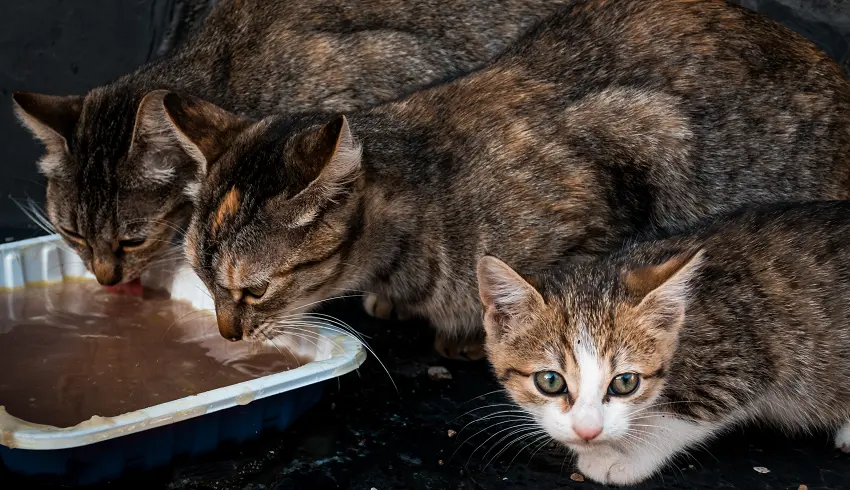
If you’re transitioning your kitten from kitten food to cat food, it might be ideal to choose wet food. Kittens have smaller teeth, and they may find it hard to chew dry kibble. Also, wet food offers additional hydration for your cat.
The answer to this largely depends on your cat’s eating habits, overall health, and budget. Wet food tends to be pricier than dry food and it has a short shelf life as well, but it has its perks. On the other hand, dry food also works, but some picky eaters may not touch it.
Finding the best food for your kitten or cat is a process. You may need to change food from time to time. I suggest buying small bags until you find the one your cat likes.
Conclusion
How long should kittens eat kitten food? The ballpark is at least until it turns a year old. It would help if you stayed on top of your pet’s diet so that it won’t experience deficiencies.
The transition from kitten food to cat food should be slow. Observe your cat for any abnormal signs and behavioral changes. When in doubt, you can always ask the vet and experienced friends for some advice.
I hope the information from this article will help you take better care of your cat’s diet.
Thank you for reading!
